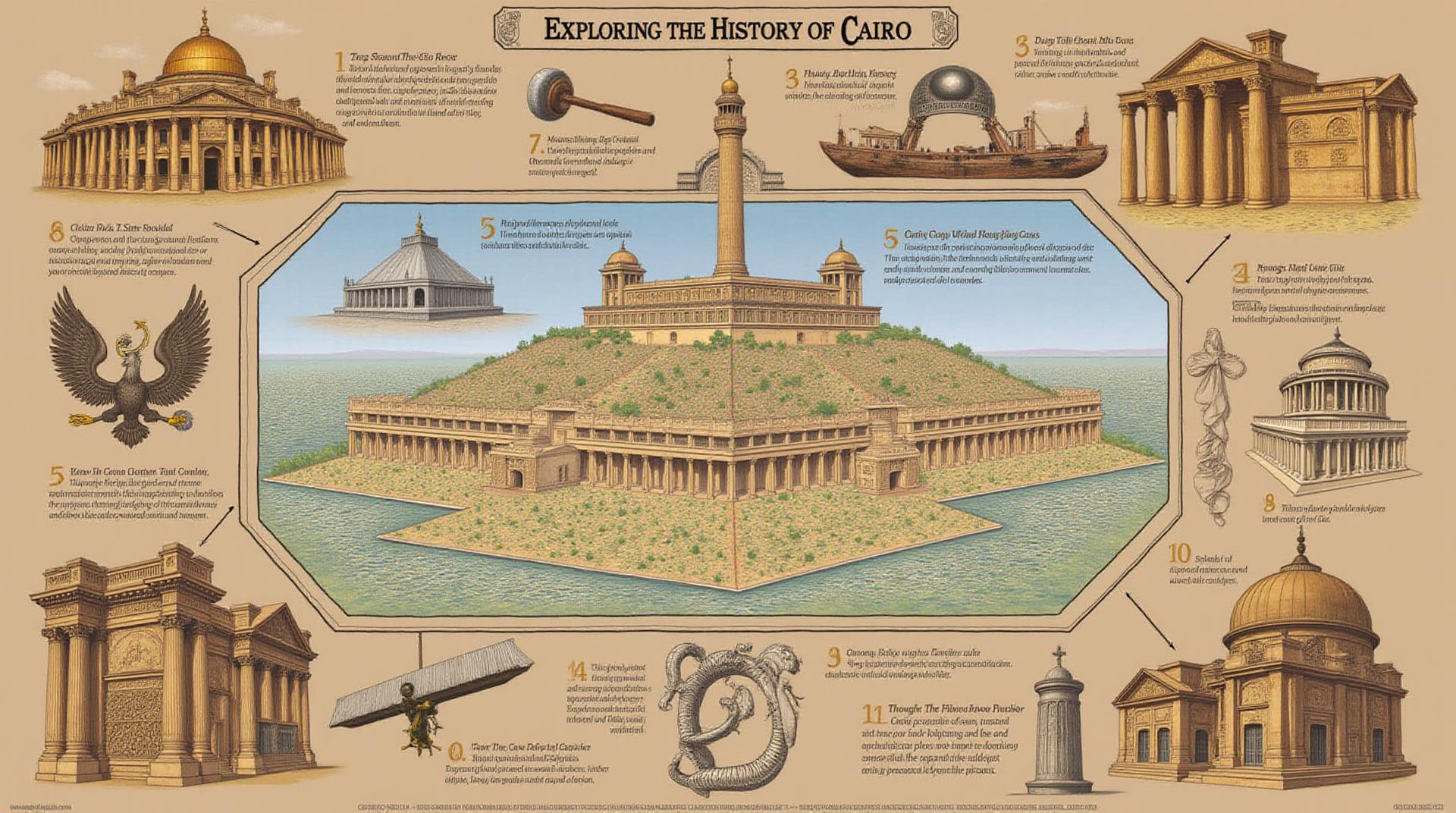Exploring the History of Cairo

Unraveling the Ancient Tapestry: An In-Depth Look at Cairo’s History
Cairo, the beating heart of ancient Egypt, pulsates with the energy of millennia past. Kneeling by the scent-infused sands of the Great Pyramids, or feeling the weight of Time in the intricately carved halls of the Khan el Khalili Bazaar, truly understanding its history beckons.
A Glimpse into the Past: A Chronology of Key Moments
Diminishing lines into history reveal a captivating narrative:
* **Ancient Pharaonic Era (c. 3100 BCE – 30 BCE):** The Nile River, a pivotal lifeline for over 3,000 years, granted birth to The City of Cairo’s foundations. The towering peaks of the pyramids rank among the world’s grandest testaments to the prowess and mastery of ancient civilization.
* **Islamic Golden Age (750-1300 CE):** This era witnessed scholarly and artistic expression flourish. Cairo rose as one of the primary centers of Islamic scholarship, its mosques and monuments telling tales of this magnificent period. Abidin’s Cairo became a hub for traders and scholars, attracting cultures from across the region.
* **Ottoman Era (1517-1914):** With the Ottoman conquest, Cairo was transformed into an urban centre. The city’s layout shifted, and era-defining marvels, like the magnificent al-Fustat quarter were woven into its architectural tapestry.
The Elgin Marbles: A Souvenir from a Divided Past
Cairo’s storied past extends even further. In 1870, the renowned Elgin Marbles, fragments of a once-enormous Parthenon sculpture, found themselves in the Egyptian Museum, a testament to the city’s captivating blend of cultural cross-pollination. Meanwhile, Cairo’s story isn’t without its own silhouettes: Ottoman-era excesses like the house of Muhammad Ali Pasha are reminders of a world of rigid social hierarchies
Experience Cairo: Places to Explore
* **Giza Necropolis:** Witness the Great Pyramids of Giza, weathered by time but still a monument to a lost world.
* **Egyptian Museum:** Trace the fascinating legacy of ancient hieroglyphs, sarcophagi, and royal artifacts.
* **Islamic Cairo:** Explore the city’s rich Ottoman and Islamic architectural inheritance – including the Citadel, mosques, and palaces.
* **Khan el Khalili Bazaar:** Immerse yourself in the bustling atmosphere of this oldest Egyptian market; stall owners offer everything from spices and oils to traditional crafts and souvenirs.
* **Museum of Modern Egyptian Art (MoMake):** Delve into 20th-century Egyptian art in a vibrant setting with a relaxed ambiance.
Making Your Exploration a Reality: Tips and Tricks for a Meaningful Journey
* **Considerations for Planning:**
* **Visa and Passport:** Check visa requirements for your nationality well in advance.
* **Schedule:** Allocate ample time to explore its key attractions as each location demands several hours to fully immerse yourself.
* **Accommodation:*Research hotels that cater to your budget and preferences
* **Transportation:** Consider the efficient local systems to cope with Cairo’s buzz.
* **Embrace Local Culture:**
* **Dress Code:** Be mindful of your attire, especially when visiting religious sites. The local customs demand a traditional and respectful approach.
* **Haggling:** Expect a certain level of haggling, especially in the bustling souvenir markets, enjoy the experience
* **Safety:**
* **Tour Groups:** Opt for organized tours when navigating unfamiliar areas.
* **Transportation:** Be vigilant when navigating public transport, and stick to well-lit and familiar routes.
Cairo is a journey through time. With its captivating history whispering secrets across centuries, immerse yourself and allow the city to sweep you off your feet; it’s the most captivating exploration you’ll ever be able to make.
Want to learn more?
- Websites: Ancient Egypt Online, the British Museum, The National Geographic Society
- Books: The Pyramids of Giza: A History* by Ian Shaw, *_Egypt: The Story of the Pharaohs_* by Toby Wilkinson
Check similar topics:
Frequently Asked Questions
Explore the history of Cairo, Egypt and answer yourself or your fellow travelers!
- Where is Cairo located?
Cairo is situated in the northern part of Egypt, along the banks of the Nile River.
- What is the significance of Cairo?
As the capital of Egypt, Cairo is a city steeped in history and culture with ancient pyramids, vibrant bazaars, imposing mosques and awe-inspiring museums.
- Which main historical periods are represented in Cairo’s architecture?
Cairo offers a glimpse into Dynastic Egypt, showcasing iconic landmarks from ancient times, such as the Pharaohs’ Pyramids of Giza, the remnants of the old city, and numerous mosques like Al-Azhar Mosque.
- What events or discoveries are found at Cairo’s Museums?
The Egyptian Museum outside the city houses priceless treasures, including the former pharaoh Tutankhamun’s treasures and other masterpieces of ancient Egyptian art and artifacts.
- What is the best time to travel to Cairo?
The best time to visit Cairo is during November to April, when temperatures are moderate and the skies are clear. However, please be aware that Ramadan observance with restrictions on dining and drinking may occur during this time.
- Can I visit the Great Pyramids of Giza?
Absolutely. Visitors can explore the Great Pyramids of Giza, including the Sphinx, or take a guided tour for more insight into their history and construction.